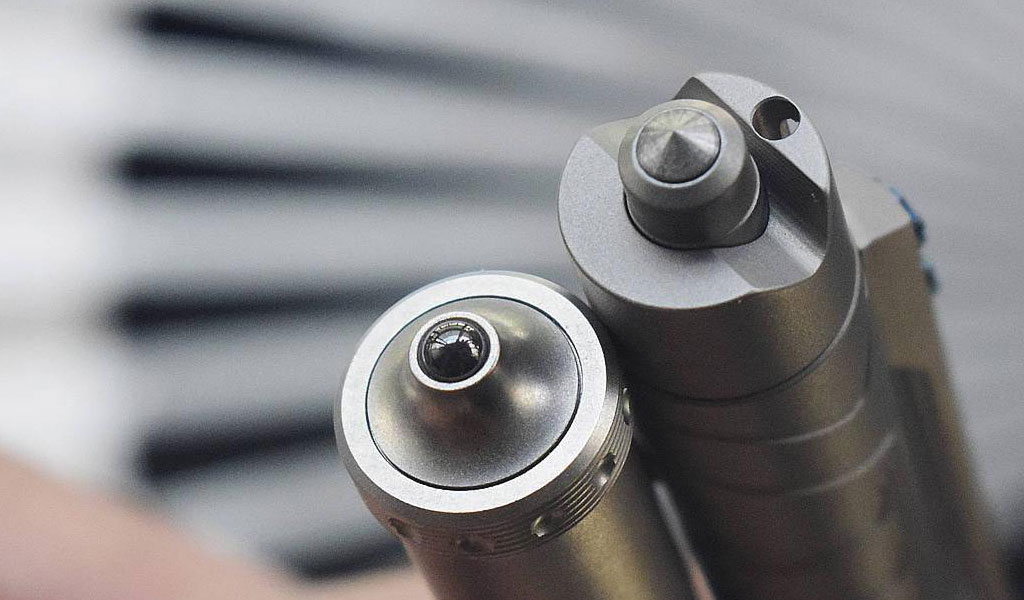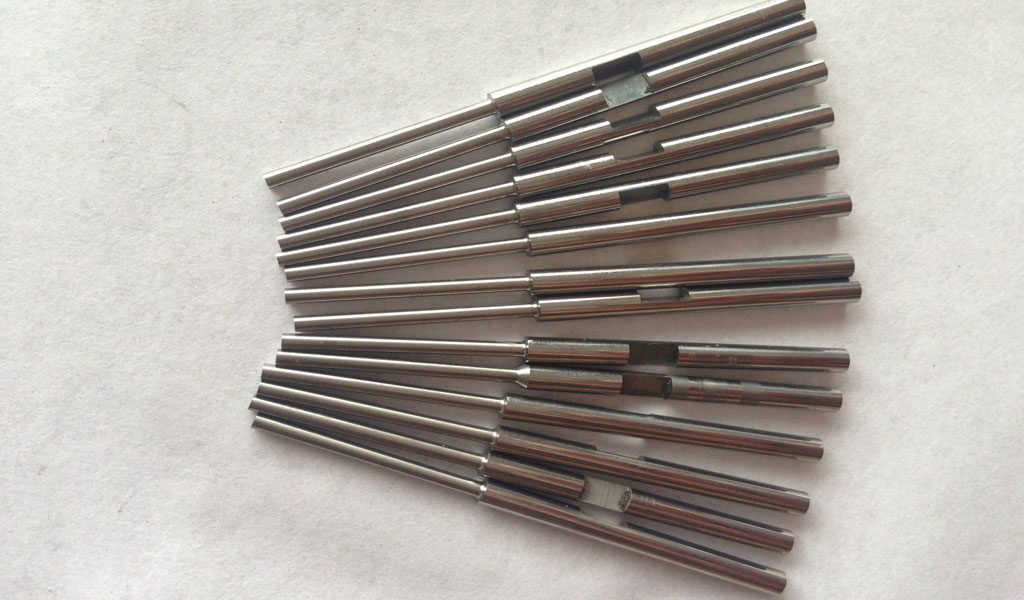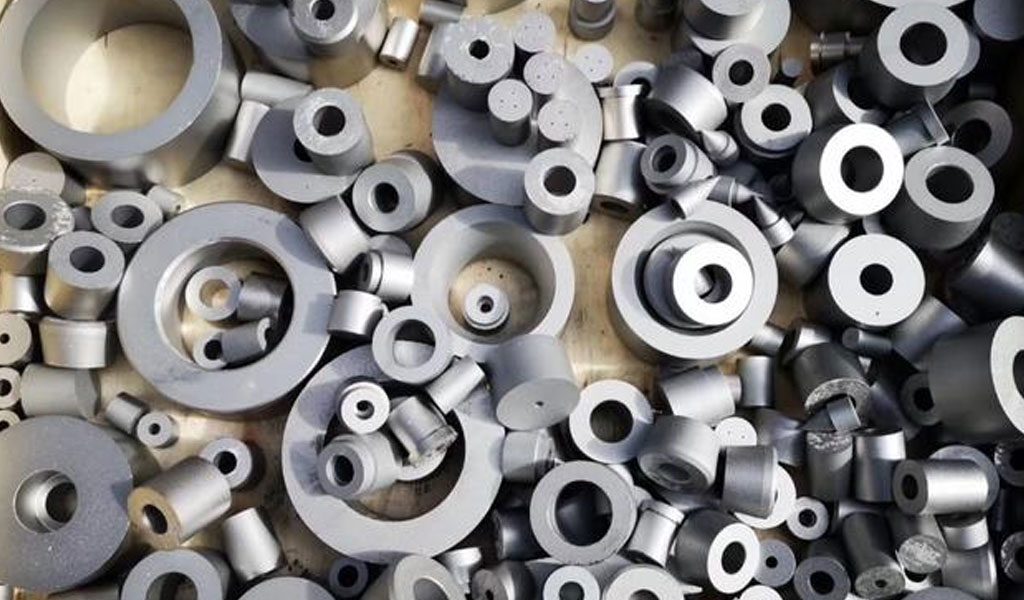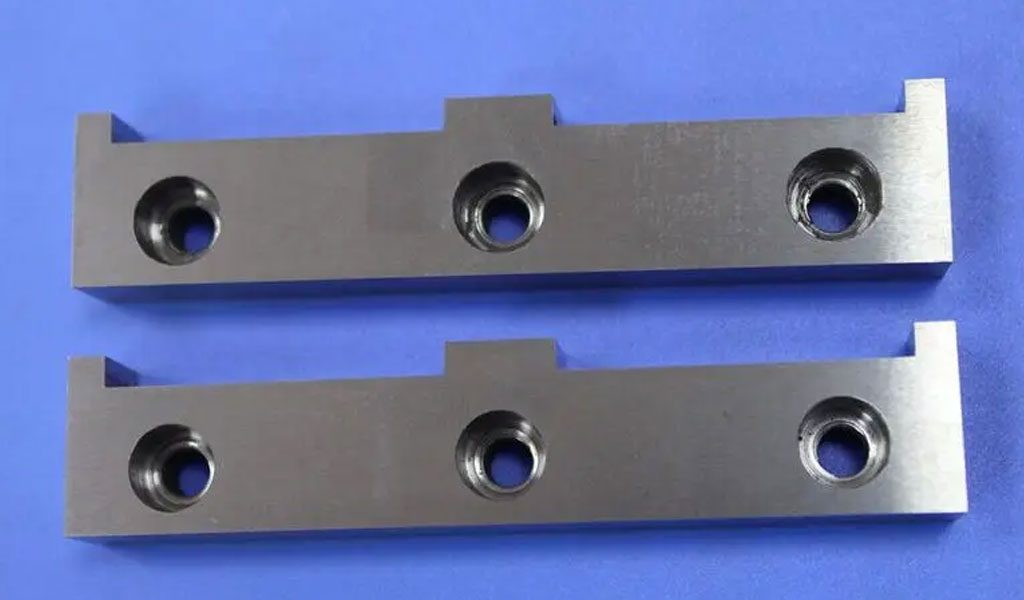In the ever-evolving landscape of modern industries, the role of advanced materials cannot be overstated. From aerospace engineering to precision manufacturing, the quest for materials that push the boundaries of durability, strength, and efficiency is unceasing. In this pursuit, two remarkable contenders have emerged: Tungsten Steel and Tungsten Carbide. This article delves into the heart of this comparison, shedding light on the distinctive characteristics, applications, and merits of these two stalwarts of industrial materials.
Tungsten Steel and Tungsten Carbide stand as testaments to human ingenuity, engineered to perform under extreme conditions and meet the demanding requirements of diverse sectors. Their unique properties and applications have solidified their places as indispensable components in various fields. As we embark on this exploration, the article will dissect the composition, manufacturing processes, and uses of Tungsten Steel and Tungsten Carbide(Different from NdFeB), unraveling the nuanced differences that define their strengths and limitations. By the end of this comprehensive analysis, readers will gain insights into how these materials contribute to shaping our technological landscape, and how selecting the right material can be the cornerstone of success in countless industrial applications.
Tungsten Steel: Properties and Applications
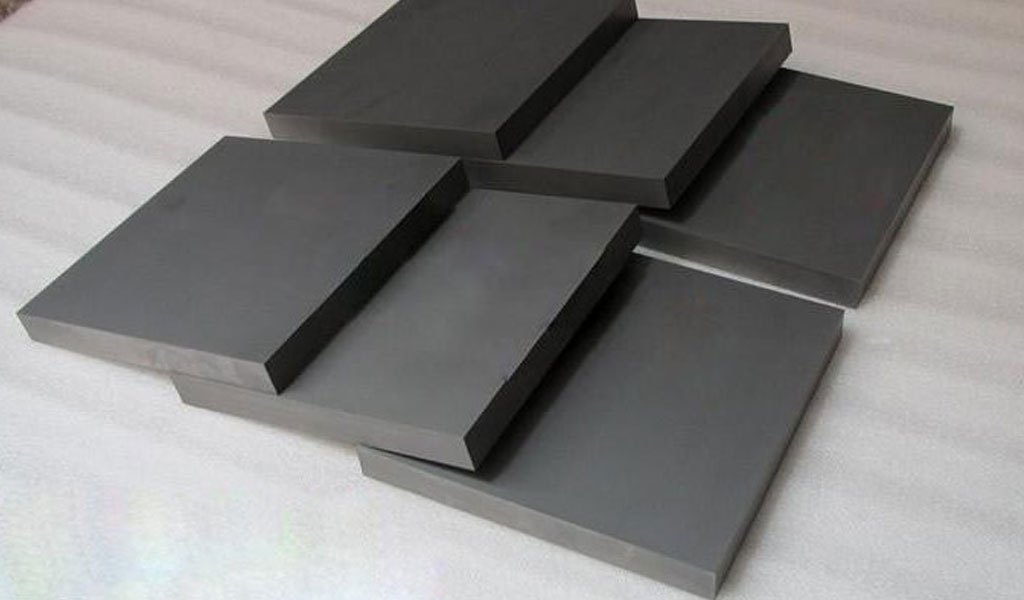
1.Composition and Characteristics
Tungsten Steel, often recognized as High-Speed Steel (HSS), is a fusion of elements meticulously chosen to confer it with extraordinary attributes. At its core lies tungsten, the vital ingredient that lends its name to the material.
Combined with carbon, and often supplemented by alloying elements such as chromium, vanadium, and molybdenum, Tungsten Steel achieves a complex composition that defines its exceptional qualities.
The presence of tungsten, comprising around 18% of the alloy, serves as the bedrock for its remarkable hardness and resilience. The addition of alloying elements imparts a unique blend of properties: chromium contributes to corrosion resistance, vanadium enhances toughness, and molybdenum augments high-temperature stability. This intricate composition transforms Tungsten Steel into a material well-equipped to withstand the rigors of challenging applications.
2.Properties that Set Tungsten Steel Apart
Hardness and Toughness
The amalgamation of tungsten and alloying elements engenders a material of unparalleled hardness. This hardness, manifested on the Rockwell C scale, ensures that Tungsten Steel tools retain their sharp edges, even during intense cutting operations. However, it is not just about hardness; Tungsten Steel possesses a balanced dose of toughness, an attribute often elusive in materials of such hardness. This makes the material resistant to fracturing under the pressures of tungsten machining, prolonging tool life and enhancing productivity.
Heat Resistance
One of the most remarkable aspects of Tungsten Steel is its resistance to thermal degradation. Even under the blistering conditions of high-speed cutting or grinding, Tungsten Steel tools maintain their integrity. This resilience against heat-induced deformation makes it a cornerstone material for applications where precision and reliability are non-negotiable.
3.Applications
Tungsten Steel’s exceptional properties find an array of applications across industries where precision and durability are paramount. In the realm of metalworking, Tungsten Steel shines as the preferred material for cutting tools. Drills, taps, end mills, and lathe tools made from Tungsten Steel exhibit outstanding performance due to their ability to retain sharpness even under extreme mechanical stress.
The construction and manufacturing sectors also reap the benefits of Tungsten Steel’s properties. Tools used for shaping, drilling, and forming metal components are often crafted from this material. The high thermal conductivity of Tungsten Steel allows for elevated cutting speeds, translating to enhanced efficiency and reduced machining time.
The aerospace and automotive industries, driven by the need for precision and reliability, embrace Tungsten Steel’s prowess. Components for engines, turbines, and critical machinery are manufactured from this alloy, ensuring optimal performance even in the most demanding conditions.
Tungsten Steel serves as a cornerstone material in the arsenal of industries that rely on impeccable precision and exceptional endurance. Its carefully orchestrated composition and resulting properties make it a prime example of how the right alloy can shape the course of industrial progress.
Tungsten Carbide: Composition and Uses
1.Composition and Crystalline Structure
Tungsten Carbide, a compound known for its exceptional hardness and resilience, is born from the union of tungsten and carbon. At its core, it consists of equal parts of these two elements, forming a chemical formula of WC. What sets Tungsten Carbide apart is not just its composition, but the way its atoms arrange themselves.The crystalline lattice structure that emerges from this composition gives rise to its remarkable properties. Tungsten Carbide’s structure resembles a three-dimensional network of covalent bonds, granting it extraordinary hardness. In fact, its hardness is second only to diamond on the Mohs scale, making it one of the hardest materials known to humanity.
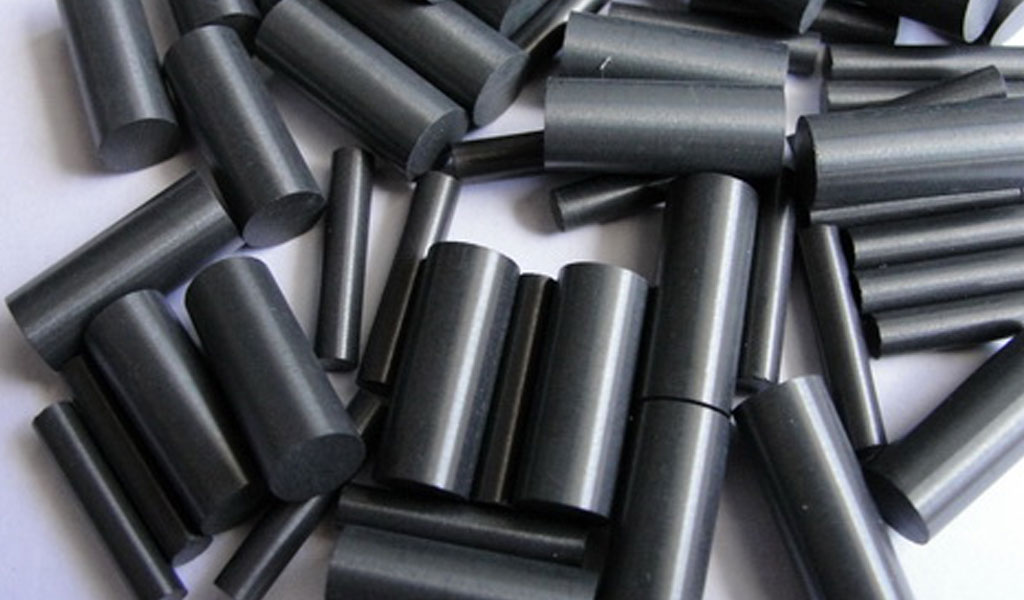
2.Properties that Define Tungsten Carbide
Hardness and Wear Resistance
The crystalline structure of Tungsten Carbide translates into an inherent hardness that defies conventional materials. This property is further reinforced by its exceptional resistance to wear and abrasion. In applications demanding robustness and longevity, Tungsten Carbide reigns supreme, showcasing its ability to withstand the relentless forces of friction and impact.
Strength and Durability
While Tungsten Carbide boasts impressive hardness, its strength and durability might not be as apparent due to its brittle nature. However, the addition of a metallic binder, usually cobalt or nickel, mitigates this brittleness. The binder infiltrates the structure, providing cohesion and enhancing the material’s toughness, thereby preventing catastrophic fractures.
3.Applications
Tungsten Carbide’s exceptional attributes open doors to a multitude of applications across various industries. Its unrivaled hardness makes it a staple in the domain of cutting tools. Drill bits, saw blades, and milling cutters adorned with Tungsten Carbide tips effortlessly carve through materials that would render conventional tools ineffective.
The mining sector, notorious for its abrasive and demanding conditions, relies on Tungsten Carbide for its wear-resistant properties. Bits, teeth, and other components of mining machinery are reinforced with Tungsten Carbide, prolonging their lifespan in the face of abrasive ores and rocks.
In the world of engineering, Tungsten Carbide finds its way into wear-resistant parts and components. Bearings, seals, and mechanical components subject to intense friction and wear benefit from the material’s longevity, reducing maintenance needs and downtime.
Even the realm of jewelry embraces Tungsten Carbide’s attributes. Its hardness, coupled with modern machining jewelry techniques, allows for the creation of exquisite, scratch-resistant jewelry pieces that stand the test of time.
Tungsten Carbide’s versatility extends its reach into industries where resilience, precision, and durability are the watchwords. It embodies the triumph of material science, offering a prime example of how chemical composition and structural design can elevate a substance to new heights of utility and performance.
Comparative Analysis
Here’s a comparison chart of some physical and chemical parameters for Tungsten Steel (High-Speed Steel) and Tungsten Carbide:
| Parameter | Tungsten Steel (High-Speed Steel) | Tungsten Carbide |
|---|---|---|
| Hardness (HRC) | 60 – 68 | 80 – 94 |
| Density (g/cm³) | 7.7 – 8.8 | 12 – 15.9 |
| Melting Point (°C) | Approx. 1,370 – 1,540 | 2,870 – 3,600 |
| Thermal Conductivity (W/m·K) | 20 – 40 | 70 – 200 |
| Coefficient of Thermal Expansion (10^-6/°C) | 10 – 15 | 4.5 – 6.0 |
| Young’s Modulus (GPa) | 190 – 210 | 400 – 700 |
| Electrical Conductivity (%) | About 1% | Very low |
| Corrosion Resistance | Susceptible to corrosion | Highly corrosion-resistant |
| Wear Resistance | Good | Excellent |
| Toughness | Moderate | Low to moderate |
| Applications | Cutting tools, drills, dies, taps | Cutting tools, inserts, wear-resistant parts, jewelry, industrial machinery |
| Cost | Moderate | Higher (due to production processes and material cost) |
1.Hardness and Wear Resistance
Tungsten Steel’s inherent hardness, attributed to its alloying elements and tungsten content, places it in the league of robust materials. However, when pitted against Tungsten Carbide, it faces a formidable contender. Tungsten Carbide’s unique crystalline lattice structure, resulting from its composition, propels its hardness to unprecedented levels, rivaling even that of diamond. This exceptional hardness equips Tungsten Carbide with the ability to withstand abrasive wear and intense pressures that Tungsten Steel might falter under.
2.Strength and Toughness
Tungsten Steel: Strength and Toughness
The introduction of alloying elements like chromium, vanadium, and molybdenum grants Tungsten Steel remarkable strength and toughness. These elements contribute to its ability to endure impacts and shocks, essential qualities for tools that experience varying mechanical loads. Tungsten Steel’s combination of hardness and toughness allows it to excel in cutting applications where the tool is subjected to both cutting forces and occasional impacts.
Tungsten Carbide: Balancing Brittleness
Tungsten Carbide, despite its outstanding hardness, exhibits a degree of inherent brittleness due to its crystalline structure. This brittleness can be a concern in applications where sudden, intense forces might cause fractures. However, this limitation is expertly addressed by the introduction of metallic binders, usually cobalt or nickel. These binders infiltrate the structure, imbuing the material with enhanced toughness without compromising its hardness. This marriage of hardness and toughness is pivotal in minimizing the brittleness concern, making Tungsten Carbide a versatile material.
3.Heat Resistance
Maintaining Hardness at High Temperatures
Both Tungsten Steel and Tungsten Carbide demonstrate commendable heat resistance, a critical trait in industries involving high-speed operations. Tungsten Steel’s alloy composition allows it to maintain its hardness even under elevated temperatures, enabling it to tackle high-speed cutting operations without sacrificing its cutting edge. Similarly, Tungsten Carbide’s crystalline structure endows it with remarkable heat resistance, ensuring that its hardness remains intact during extreme thermal conditions.
Applications in High-Speed Operations and Extreme Environments
The heat resistance of both materials makes them invaluable in high-speed cutting operations, where elevated temperatures could otherwise compromise tool integrity. Industries such as aerospace and automotive manufacturing heavily rely on Tungsten Steel and Tungsten Carbide for precision cnc machining and cutting, even under the intense thermal stresses generated by high-speed operations.
4.Corrosion Resistance
Comparing Corrosion Resistance
In terms of corrosion resistance, Tungsten Carbide has the upper hand due to its stable crystalline lattice structure. This structure minimizes vulnerability to corrosive agents, making Tungsten Carbide suitable for applications where exposure to harsh environments could lead to deterioration. While Tungsten Steel does possess corrosion-resistant properties due to its alloying elements, Tungsten Carbide’s unique composition gives it a distinct advantage in environments prone to corrosion.
Choosing the Right Material for Corrosive Environments
Each material finds its niche in specific scenarios. Tungsten Steel’s corrosion resistance, while not as pronounced as Tungsten Carbide’s, still makes it suitable for less aggressive corrosive environments. On the other hand, Tungsten Carbide’s corrosion resistance makes it an optimal choice when exposure to corrosive agents is a significant concern, such as in chemical and marine industries.
In this comparative analysis, the multifaceted attributes of Tungsten Steel and Tungsten Carbide come to light, each material carving its own path of excellence in hardness, toughness, heat resistance, and corrosion resistance. Understanding these nuances is pivotal in making informed material choices that align with the specific demands of various industrial applications.
Application-specific Considerations
While both Tungsten Steel and Tungsten Carbide possess exceptional qualities, the choice between the two materials hinges on the specific demands of the application. Understanding their strengths and limitations is crucial to ensuring optimal performance and longevity. Let’s delve into scenarios where one material triumphs over the other, showcasing their significance in various industries.
1. Semiconductor Engineering
In the Semiconductor industry, precision and reliability are paramount. Tungsten Steel’s blend of hardness and toughness makes it an ideal candidate for cutting tools used in machining intricate components. Its ability to withstand high-speed cutting operations ensures that Semiconductor parts are manufactured with utmost precision. On the other hand, Tungsten Carbide’s superior hardness finds its place in applications requiring abrasion resistance, such as electronic and other electronic components that are subjected to abrasive wear.
Example: Tungsten Steel finds its role in crafting precise holes for fasteners, while Tungsten Carbide is utilized for electronic components that endure extreme temperatures and wear.
2. Automotive Manufacturing
Automotive machining entails a broad spectrum of tasks, from shaping metal parts to fabricating intricate components. Tungsten Steel, with its blend of hardness, toughness, and heat resistance, takes the lead in creating cutting tools that fashion components with precision and speed. Its ability to maintain its hardness at elevated temperatures ensures that high-speed multi axis cnc machining processes are carried out efficiently.
Example: Tungsten Steel drills produce precise holes in automotive components, while Tungsten Carbide inserts in engine components resist wear and abrasion.
3. Mining and Exploration
Mining is synonymous with abrasive wear and high-stress conditions. Tungsten Carbide’s unparalleled wear resistance and hardness make it the ideal choice for cutting and drilling tools used in extracting valuable resources from the earth. Its ability to endure the harsh environment of mining operations sets it apart.
Example: Tungsten Carbide-tipped mining tools withstand the abrasive forces of rock and ore, ensuring prolonged efficiency and reduced downtime.
4. Jewelry Design
In the realm of jewelry, durability and aesthetic appeal are paramount. Tungsten Carbide’s exceptional hardness and scratch resistance make it a favored material for creating robust and long-lasting jewelry pieces. Rings, bracelets, and other ornaments crafted from Tungsten Carbide retain their luster and elegance over time.
Example: Tungsten Carbide rings maintain their polished appearance and resist scratches, appealing to those seeking both style and durability.
5. Manufacturing and Precision Engineering
Manufacturing encompasses a diverse array of tasks, from milling to shaping intricate components. Tungsten Steel’s blend of hardness and toughness proves invaluable in tools used for high-speed operations, ensuring accurate and efficient manufacturing. However, in applications where resistance to corrosive agents is crucial, Tungsten Carbide’s corrosion resistance might be the deciding factor.
Example: Tungsten Steel tools facilitate precise machining, while Tungsten Carbide tools excel in corrosive environments, such as chemical processing.
In each of these scenarios, the choice between Tungsten Steel and Tungsten Carbide is guided by the specific requirements and challenges posed by the industry. These materials showcase their versatility and adaptability, providing solutions that meet the distinct needs of various sectors, all while pushing the boundaries of what is achievable in the realm of materials science.
Future Developments and Innovations
As technology marches forward, the world of materials science is a fertile ground for innovation and advancement. Tungsten Steel and Tungsten Carbide, already stalwarts in their own right, stand poised for potential enhancements that could reshape their applications and capabilities. While the current state of these materials is impressive, the future promises exciting possibilities that could further elevate their performance and versatility.
1. Tungsten Steel Advancements
- New Alloying Techniques:Researchers are continually exploring novel alloying techniques to fine-tune the properties of Tungsten Steel. Innovations in material synthesis could lead to alloys with enhanced combinations of hardness, toughness, and heat resistance. Fine-tuning the composition could expand the material’s application spectrum, making it even more adaptable to various industries.
- Surface Treatments and Coatings:Advancements in surface treatments and coatings could enhance Tungsten Steel’s wear resistance even further. Innovative coating materials and techniques could create a protective barrier that extends tool life and reduces friction during cutting and machining operations. This could lead to increased efficiency and reduced maintenance requirements.
2. Tungsten Carbide Innovations
- Nanotechnology Integration:The integration of nanotechnology could revolutionize Tungsten Carbide’s properties. Nanoscale reinforcements could provide increased hardness, toughness, and wear resistance. The precise control over grain size and structure at the nanoscale level could open up new frontiers in material engineering, allowing for tailored properties to suit specific applications.
- Advanced Binders:Advancements in binder materials for Tungsten Carbide could further enhance its mechanical properties. Research into binders that offer superior toughness without compromising hardness could address the material’s inherent brittleness. These advancements could make Tungsten Carbide even more adaptable to dynamic and high-impact environments.
3. Synergistic Combinations
- Hybrid Materials:The future might witness the emergence of hybrid materials that combine the strengths of Tungsten Steel and Tungsten Carbide. These hybrid materials could offer a balanced blend of hardness, toughness, wear resistance, and corrosion resistance, catering to a broader range of applications. The synergy between these two materials could give rise to entirely new material classes with unparalleled properties.
- Composite Structures:Composite structures that integrate Tungsten Steel and Tungsten Carbide in strategic arrangements could provide optimized solutions for specific tasks. By harnessing the strengths of both materials, engineers could create components with tailored properties that outperform traditional materials in terms of durability, strength, and efficiency.
In the grand tapestry of technological evolution, the trajectory of Tungsten Steel and Tungsten Carbide is undoubtedly poised for transformation. As research and innovation unfold, these materials could become the bedrock of even more industries, enabling unprecedented progress across manufacturing, engineering, and beyond. The journey toward these advancements underscores the ever-expanding potential of human ingenuity in the realm of materials science.
China Tungsten Steel And Tungsten Carbide CNC Machining Manufacturer
The world of materials science is a realm of constant innovation, where the marriage of composition, structure, and application forms the foundation of progress across industries. In the exploration of Tungsten Steel and Tungsten Carbide, we’ve embarked on a journey that delves into the intricacies of these two exceptional materials and their remarkable properties.
Tungsten Steel, with its carefully orchestrated composition of tungsten, carbon, and alloying elements, stands as a symbol of strength, toughness, and heat resistance. It finds its niche in metalworking and manufacturing, shaping the very tools that shape our modern world. Its ability to endure high-speed cutting operations while retaining sharpness and stability cements its role as an invaluable asset in precision industries.
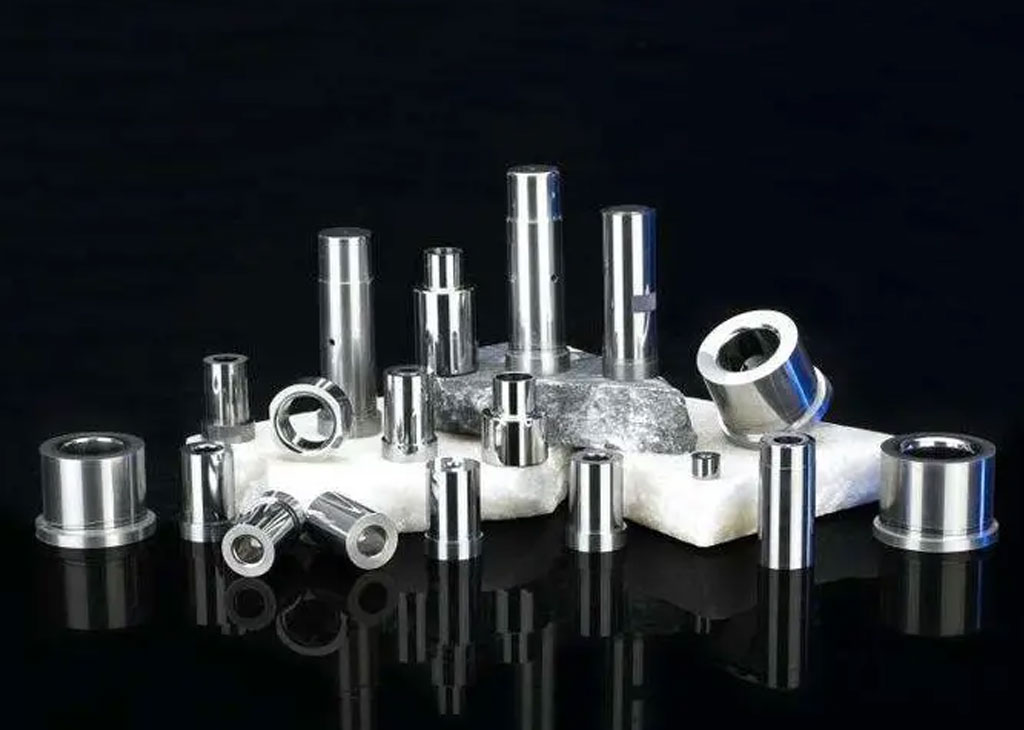
Tungsten Carbide, born from the union of tungsten and carbon, transcends the boundaries of hardness and wear resistance. Its crystalline lattice structure imbues it with the hardness of diamond, making it a champion in applications where durability and resistance to abrasive wear are paramount. The introduction of binders mitigates its brittleness, making it adaptable to diverse environments.
The comparison between Tungsten Steel and Tungsten Carbide underscores the importance of material selection. From aerospace engineering to mining, automotive manufacturing to jewelry design, the specific requirements of each application dictate the material of choice. The interplay of hardness, toughness, heat resistance, and corrosion resistance informs decisions that can impact performance, productivity, and safety.
As we navigate the dynamic landscape of industrial progress, the significance of Tungsten Steel and Tungsten Carbide becomes undeniable. Their enduring impact on technological advancement is a testament to human ingenuity in harnessing the properties of matter to overcome challenges. With each development, each innovation, these materials further solidify their roles as cornerstones of modern engineering, enabling achievements that were once deemed impossible.
In the grand tapestry of materials science, Tungsten Steel and Tungsten Carbide remain pivotal threads, woven into the fabric of innovation and progress. Their versatility, adaptability, and exceptional qualities shine a light on the boundless potential of human creativity and discovery. As we continue to shape our world, we do so with the knowledge that the path forward is paved with materials that have already left an indelible mark on history and are destined to shape our technological future.
Be-Cu prototype, a manufacturer of tungsten machined and assembled parts for the mold and tooling industry, was founded in 1995 in China, as a screw machine shop. It has evolved and grown to become a one-stop mfg supplier of parts and services for industries.With the aid of professional and perfect test support, we ensure the stability and excellent quality of the Tungsten Carbide Hobs, Heavy Tungsten Buffer Weights, Tungsten Carbide Mining Roof Bits so that make us occupy the leading position in the industry.We always regard innovation as our life, and advocate innovation by all staff and in all aspects, and focus on creating the most advanced and high-quality Machining Tungsten.
-

Precision Grinding Tungsten Steel Mold Parts
-

Special-Shaped Non-Standard Medical Device Needles
-

Precision Tungsten Copper Alloy Eccentric Insert
-

Carbide Tungsten Valve Seat For Oil And Gas Industry
-

Custom Hexahedron Tungsten Dnd Dice
-
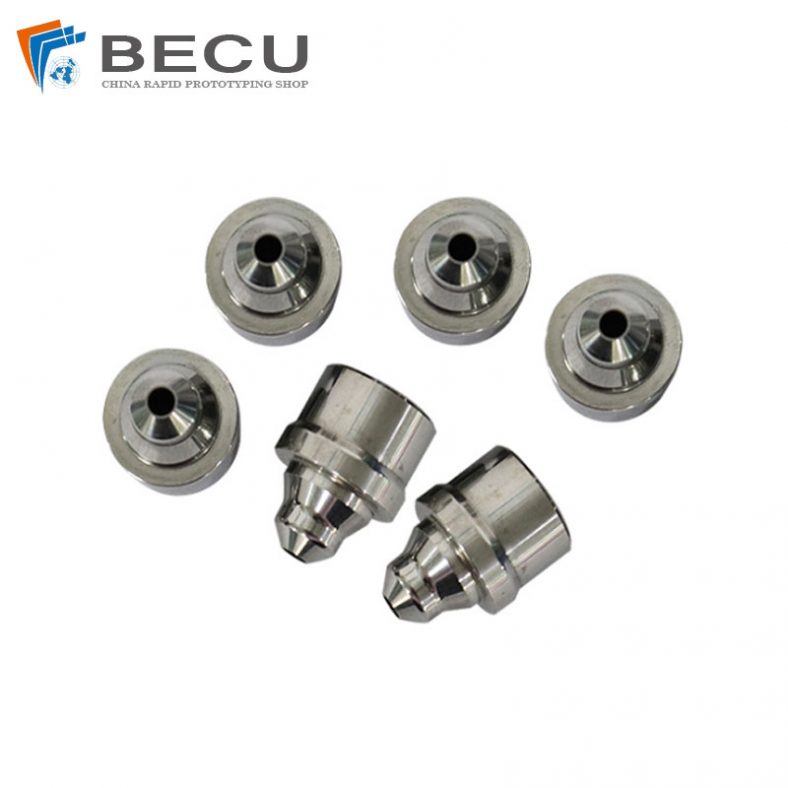
Tungsten Carbide 3D Printer Nozzle
-

Sintering YG6 Tungsten Alloy Non-Slip Thread Screw
-
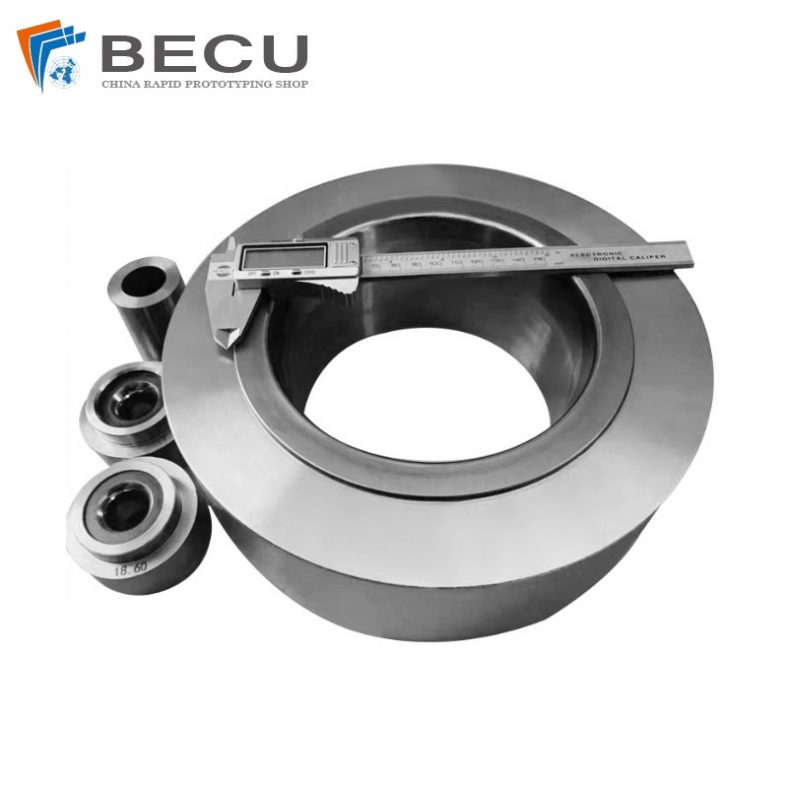
YG15 Tungsten Cobalt Cemented Carbide Parts
In the future journey, we are willing to work hand in hand with you to build harmony and create brilliance. The pursuit of excellence has always been a goal that we will strive to achieve in every area of our business. We constantly improve our product quality and service to improve customer satisfaction, satisfaction index and loyalty. Our company with reasonable price, excellent quality, sincerely welcome customers at home and abroad to review, and sincerely cooperate with you, add luster to your products. We advocate the courage to take responsibility and be responsible to the end. Our company through the corresponding management change, enterprise brand building and cultural change to better improve customer perceived value, build brand equity. We welcome old and new customers to hold hands together for exploring and developing; For more information, be sure to feel free to contact us.

